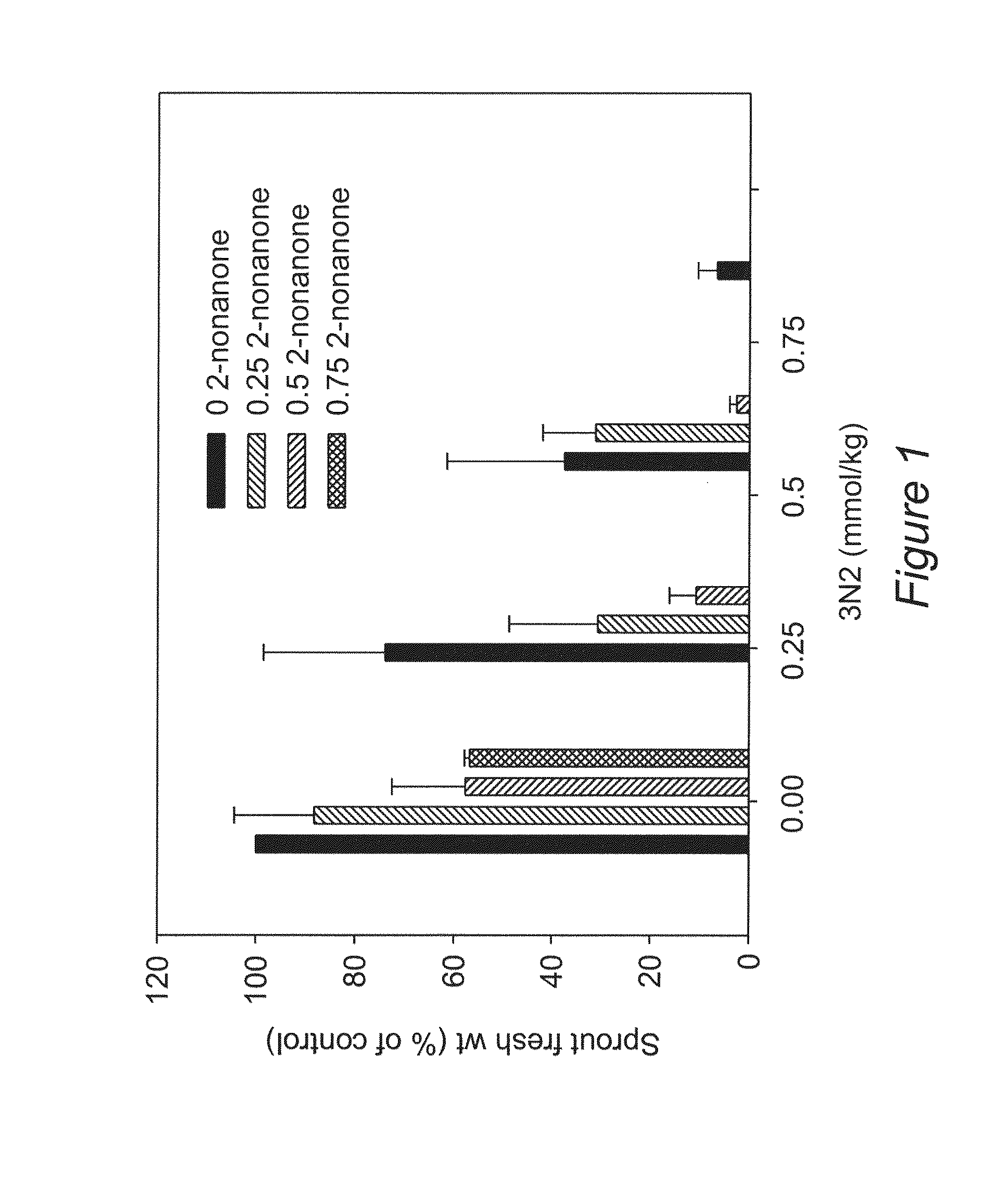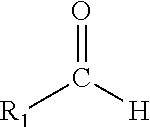Enhancement of Potato Tuber Sprouting Inhibitors Using Various Combinations of Agents
a technology of potato tuber and potato tuber, which is applied in the field of potato tuber sprouting inhibitors using various combinations of agents, can solve the problems of increasing weight loss, reducing the quality of potato tuber destined for fresh and processing markets, and none of them appear to be as effective as cipc, so as to reduce the amount of conventional sprouting inhibitors, and improve the effect of sprouting inhibition
- Summary
- Abstract
- Description
- Claims
- Application Information
AI Technical Summary
Benefits of technology
Problems solved by technology
Method used
Image
Examples
example 1
Use of Mixtures of 3-nonen-2-one (3N2) and 2-nonanone as Inhibitors of Sprouting of Potato Tubers
[0052]The objective of this study was to determine the efficacy of mixtures of 3N2 and its metabolite, 2-nonanone, on sprout inhibition. Potato tubers were treated for 24 h in a closed chamber. The chemicals were volatilized from filter paper inside the chamber. Treatment was with 0 to 0.75 mmol / kg of 3N2 combined factorially with 0 to 0.75 mmol / kg of 2-nonanone. The treated tubers were placed at 22° C. and sprout fresh weights were measured 21 days after treatment. Sprout growth from tubers treated with 0.5 and 0.75 mmol / kg 2-nonanone averaged 58% of non-treated tubers, compared with 9% for 0.75% 3N2 applied alone (FIG. 1). The 0.25 mmol / kg 3N2+0.5 mmol / kg 2-nonanone treatment inhibited sprouting to the same extent as the 0.75 mmol / kg 3N2 treatment.
example 2
Use of Combinations of Trans-2-nonenal and a Conventional Inhibitor, CIPC
[0053]Following the emergence of Russet Burbank potato tubers from dormancy, CIPC and trans-2-nonenal were applied either alone or sequentially as indicated in FIG. 2A. All treatments were applied at 151 days after harvest (DAH). Sprout control was considered to end when one third of the tubers in the sample produced a sprout mass of greater than 50 mg / tuber or when the mean of the total sample exceeded 1 g / tuber. When both CIPC and trans-2-nonenal were used, the sprout-free interval of the tubers stored at 9° C. (48° F.) was significantly extended to 181 days compared to 124 days (CIPC alone) and 155 days (trans-2-nonenal alone) (FIGS. 2A and B). In this study, the application of CIPC was unconventional in that it occurred when tubers were beginning to sprout, as opposed to the window between wound healing and sprouting. CIPC provided additional sprout control on tubers whose actively growing sprouts were init...
example 3
Use of α,β-Unsaturated and Aliphatic Carbonyl Compounds in Combination with CIPC to Enhance Sprout Inhibition of Potato tubers in Storage
[0054]The objective of the experiment described below was to identify chemical sprout control regimes for season-long efficacy that will enable the use of significantly lower-than-label application rates of CIPC. The study used CIPC to extend the sprout-free period following an application of 3-decen-2-one or 2-decanone after sprouting occurs. Protocol.
[0055]This study, as described, used 3-decen-2-one (3D2). The study was duplicated as described with 2-decanone in place of 3D2. Tubers were stored at 9° C. until they emerged from dormancy (when 75% of the sample tubers are peeping, and the longest sprouts are no longer than 4 mm). At this time, 3-decen-2-one was applied at 0.75, 0.50, or 0.25 mmol / kg to ‘burn off’ growing sprouts. Each of these treatments was followed by applications of 1, 0.73, 0.47 or 0.20% a.i. of CIPC EC. The label rate of CIPC...
PUM
 Login to View More
Login to View More Abstract
Description
Claims
Application Information
 Login to View More
Login to View More - R&D
- Intellectual Property
- Life Sciences
- Materials
- Tech Scout
- Unparalleled Data Quality
- Higher Quality Content
- 60% Fewer Hallucinations
Browse by: Latest US Patents, China's latest patents, Technical Efficacy Thesaurus, Application Domain, Technology Topic, Popular Technical Reports.
© 2025 PatSnap. All rights reserved.Legal|Privacy policy|Modern Slavery Act Transparency Statement|Sitemap|About US| Contact US: help@patsnap.com



